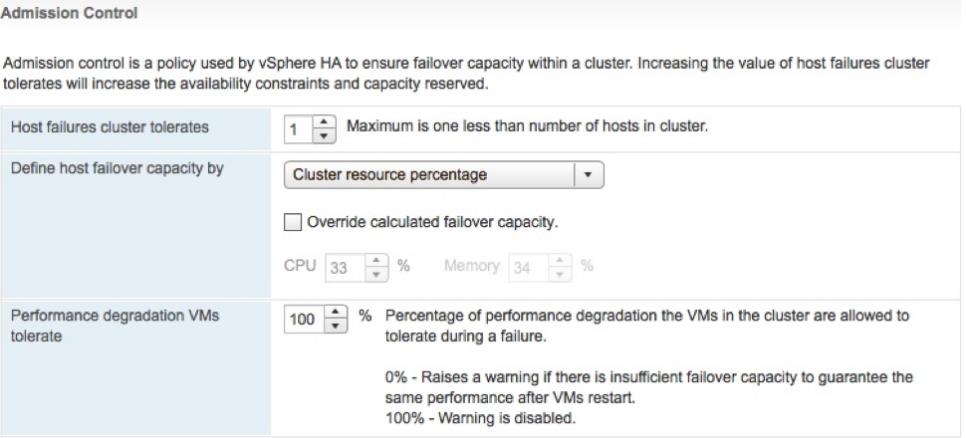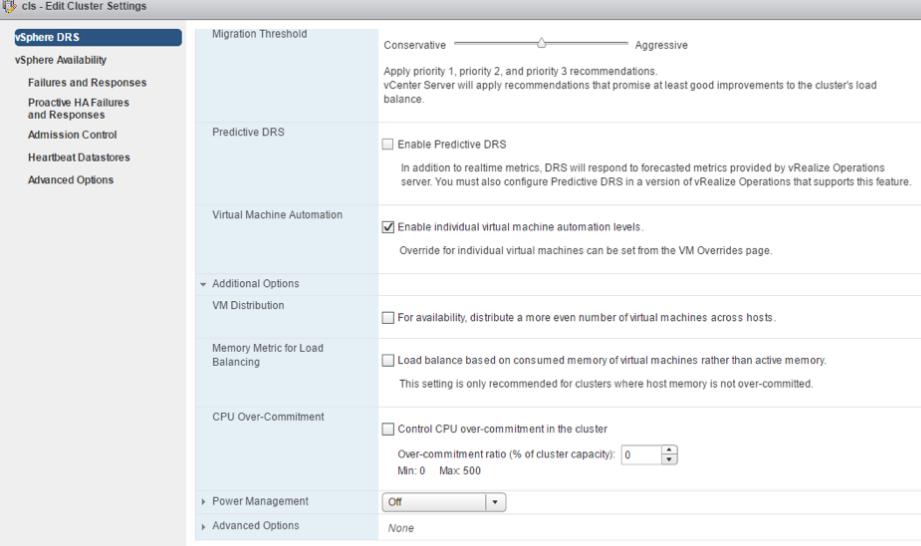Yesterday (18-OCT-2016) during VMworld Barcelona 2016, vSphere 6.5 has been announced during the General session. vSphere 6.5 released with lot of new features that most of them were waiting for. vSphere 6.5, the latest version of its industry-leading virtualization platform. This new release of vSphere features a dramatically simplified experience, comprehensive built-in security, and a universal app platform for running any app. As usual with the release of each vSphere version,It continues to provide the best availability and resource management features for business critical application workloads. vSphere 6.5 also added new and improved features. We will talk about new features available with vSphere 6.5 HA & DRS.
- Proactive HA
- vSphere HA Orchestrated Restart
- Simplified vSphere HA Admission Control
- Network Aware DRS
- DRS Advanced options
What’s new with vSphere 6.5 HA?
Proactive HA
vSphere 6.5 HA now also detect the hardware conditions of the ESXi host and allow you to evacuate the Virtual machines before the hardware issues cause an outage to VM’s with the help of Proactive HA. This work in conjunction with hardware vendors monitoring solutions to receive the health status of the hardware components such as memory, fans and power supplies. You can configure vSphere to respond according to the failure of hardware components.
If any hardware components is failed and it is marked as unhealthy by hardware monitoring, vSphere will classify the affected ESXi host as either moderately degraded or severely degraded based on the component failure. vSphere will place that affected ESXi host into new state called “Quarantine Mode”.
In the Quarantine Mode, DRS will not use the ESXi host for new Virtual machine placements and also DRS will attempt to evacuate the host as long as it would not cause performance issue. You can also configure proactive HA to place the degraded ESXi hosts into Maintenance mode which perform the vMotion of Virtual machine to other healthy ESXi hosts in the cluster.
vSphere HA Orchestrated Restart
With the help of vSphere 6.5 HA orchestrated Restart option, We can define the virtual machine to Virtual Machine dependency chains. These dependency rules are enforced when vsphere HA restart VM’s from the failed ESXi hosts. This option is really useful to recover the multi-tier applications that it needs to be brought up in particular order. for example, DB VM needs to brought first and followed by app VM and the by Web VM.
Simplified vSphere HA Admission Control
Lot of new improvements to vSphere 6.5 HA Admission control has been made for simplified administration. Admission control is used to set aside a calculated amount of resources that are used in the event of a host failure.
Cluster Resource Percentage : Simply define the Number of ESXi hosts tolerate for failures. vSphere HA will automatically calculate a percentage of resources to set aside by applying the “Percentage of Cluster Resources” admission control policy. It is automatically recalculated, if you have added or removed ESXi hosts in the cluster.
Possible Override : You can override the default CPU and memory settings if needed. This option also automatically recalculated if you add or removed ESXi host from the cluster based on its override Percentage.
Performance Degradation VMs Tolerate : vSphere Web Client will issue a warning if vSphere HA detects a host failure would cause a reduction in VM performance based on the actual resource consumption, not only based on the configured reservations. The administrator is able to configure how much of a performance loss is tolerated before a warning is issued.
What’s new with vSphere 6.5 DRS
Network Aware DRS
DRS will now consider the network bandwidth on the ESXi hosts before placing new Virtual machines on the ESXi host and also during VM migrations to the ESXi host. DRS will check Tx and Rx rates of the connected physical uplinks and avoids placing VMs on hosts that are greater than 80% utilized. It uses the network utilization information as the additional check to determine the destination ESXi is suitable for VM placement and migration. This option improves the DRS placement decisions.
DRS Advanced options
Some of the common advanced DRS settings are now configured from the UI for simpler administration.
- VM Distribution: Enforce an even distribution of VMs. This will cause DRS to spread the count of the VMs evenly across the hosts.
- CPU over-commitment: This is an option to enforce a maximum vCPU:pCPU ratios in the cluster. Once the cluster reaches this defined value, no additional VMs will be allowed to power on.
- Memory Metric for Load Balancing: DRS uses Active memory + 25% as its primary metric when calculating memory load on a host. The Consumed memory vs active memory will cause DRS to use the consumed memory metric rather than Active. This is beneficial when memory is not over-allocated. As a side effect, the UI show the hosts be more balanced.
That’s it. We have great set of new features added on the vSphere 6.5 HA & DRS for simplified management and administration. I hope this is informative for you. Thanks for Reading!!. Be social and share it in social media, if you feel worth sharing it.
vSphere 6.5 Related Posts:
What’s New with VMware vSphere 6.5?
vSphere 6.5 -What’s New with vCenter 6.5?
What’s New with Virtual SAN 6.5? – New Features Overview
vSphere 6.5 -What’s New with vSphere 6.5 HA & DRS
vSphere 6.5 – What’s is in VMware vSphere 6.5 Fault Tolerance?
vSphere 6.5 – How VM’s are Secured using vSphere 6.5 Security Features?



